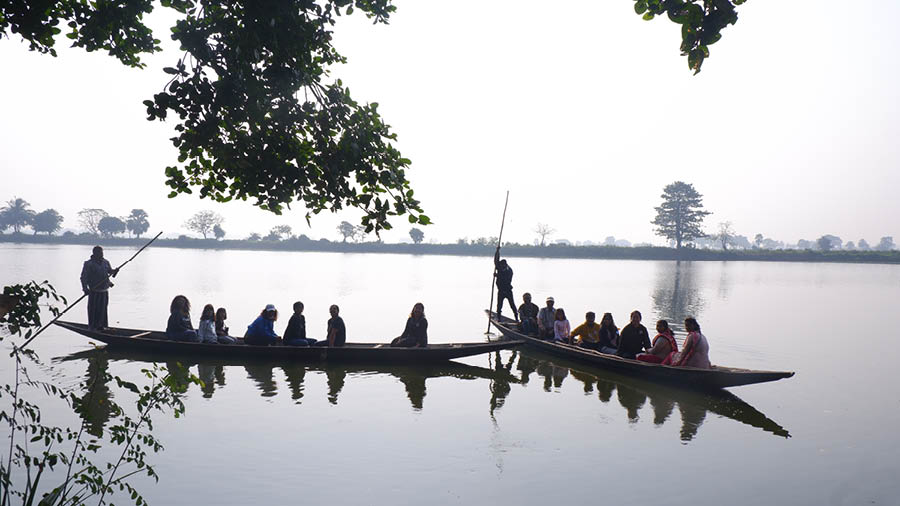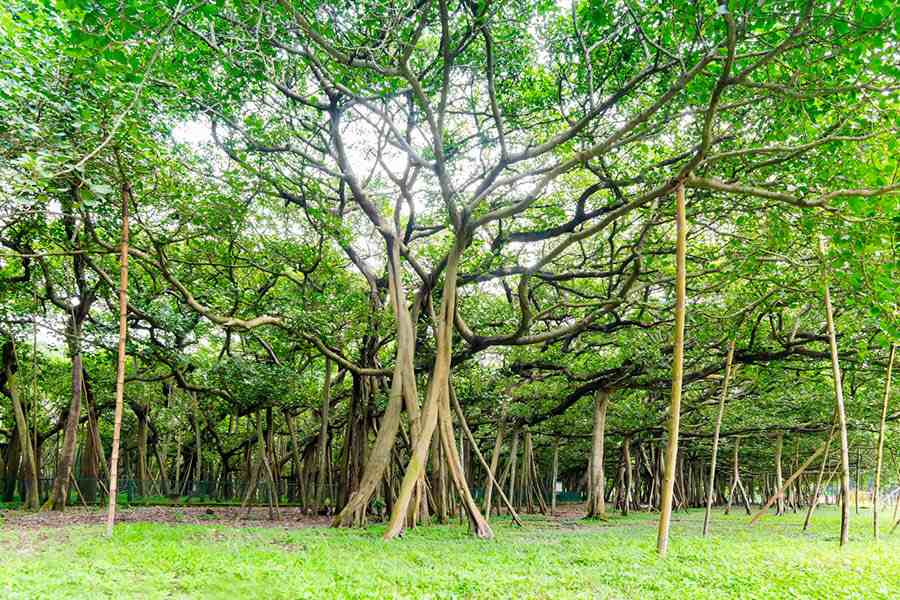From the snow-dusted Himalayan foothills to the warm coastal jungles, West Bengal is beautiful. With green pastures in the midst of urbanisation in Kolkata, to mangroves ruled by the Bengal tiger and quaint hills known for both tea and elephants — nature flaunts its many ecosystems in the region.
On this World Environment Day, My Kolkata speaks to conservationists, experts and officials to delve into what makes Bengal’s ecologies so special and the need for conservation efforts to keep them thriving.
Sunderbans
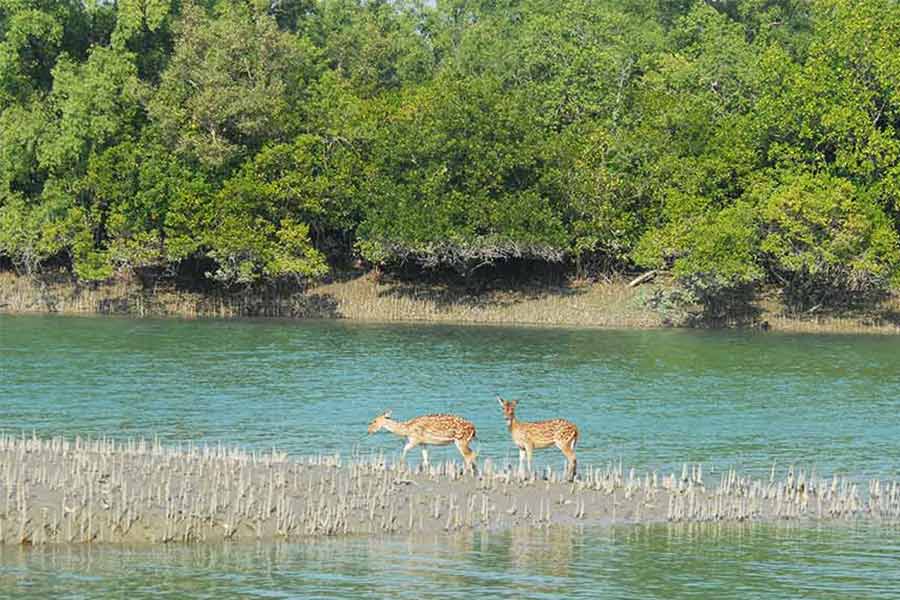
Sunderbans is the largest mangrove ecosystem in the world spread over 10,000sqkm Pradeep Vyas
Perhaps Bengal’s most famous forest, the Sunderbans is a mangrove ecosystem where the water is saline and soil is loose. These unique conditions mean only mangrove shrubs can thrive here. Apart from the mangroves, the other flora making up the ecosystem are those with respiratory roots or aerial roots known as pneumatophores.
A UNESCO World Heritage Site, the Sunderbans in its entirety, combined with human settlements, stretch for 26,000 sq km over India and Bangladesh, making it the largest stretch of intact mangrove ecosystem in the world. The forest itself is 10,000 sq km of densely populated mangrove ecosystem.
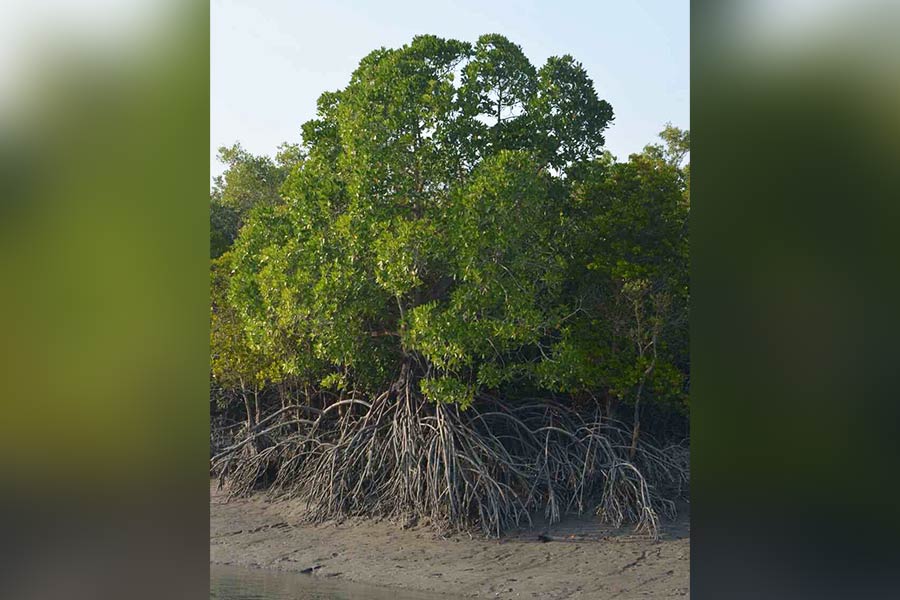
Pneumatophores or aerial roots are a unique feature of mangroves Rumela Basu
That mangroves act as a natural barrier and protection against flooding and cyclones is a known fact. The Sunderbans takes the biggest hit absorbing much of the impact of cyclones from Bay of Bengal, which means that cyclones like Amphan and Remal arrive inland at a reduced wind speed causing less infrastructural damage.
Interestingly, the Sunderbans have the unique feature of being the only mangroves in the world inhabited by tigers. Apart from the striped big cat, the ecosystem also supports animals like deer, crocodiles and otters along with a plethora of birds. The roots that are the highlight of mangrove vegetation also help attract fish from the Bay of Bengal, which in turn provides opportunities for fishermen of the region to sustain their livelihoods.
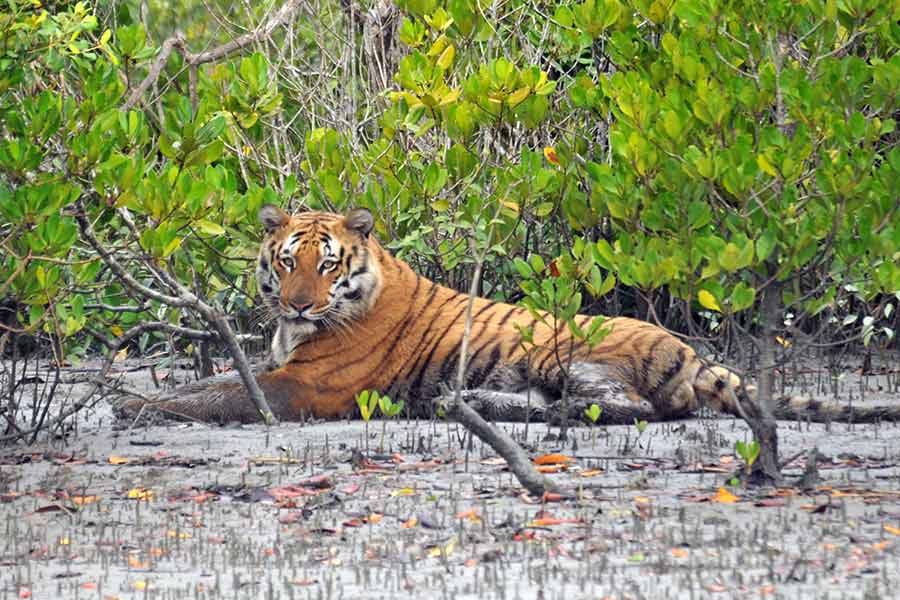
Sunderbans is the only mangrove ecosystem that houses tigers, a feature unique to the region Pradeep Vyas
According to Dr Pradeep Vyas, former Chief Wildlife Warden of West Bengal, the biggest threat to the Sunderbans is climate change. “The water is rising and the salinity is increasing, which means that the water is going to cover a lot of the land that is already at sea level,” explains Vyas. What this means is that with an increase in water levels, the depleting land cover will also restrict food options for the animals of the region who will also be dealing with a lack of potable water with the increasing saline levels.
This starts a cycle where grazing animal populations decrease, causing the jungle’s apex predator — the Bengal Tiger — to have lesser prey, forcing them to look for food in human settlements. The human-tiger conflict, which was put to bed by severe conservation methods, will become a problem for the region once more.

Mangrove reforestation has been a part of conservation efforts in the Sunderbans since 2010 My Kolkata
Climate change remains the biggest threat to the region threatening to undo years of work. Conservation efforts in the Sunderbans have led to an increase of both green mangrove cover and tiger populations. Given the amount of work that was done in Sunderbans to provide alternative livelihoods to villagers through tourism and pisciculture, the human-tiger conflict has become a thing of the past, only looming as a danger in the future due to climate change.
East Kolkata Wetlands
As we move inland from the coast to the urban bustle of Kolkata, the ecology changes vastly, with ecosystems that are a result of natural phenomenon and urbanisation.

The East Kolkata Wetlands are often referred to as the Lungs of Kolkata Nobina Gupta
A natural resource lying on the periphery of the city, the East Kolkata Wetlands (EKW) nurtures the world’s largest sewage-fed aquaculture system, covering 12,500 hectares (125 sq km) of land with a population of over 1,50,000 people. “The wetlands were engineered during the British era to channel the city’s entire wastewater and purify it naturally. The city literally has an organic waste management system, free of cost,” says Nobina Gupta, founder-director of Disappearing Dialogues, a collective that has worked extensively for the welfare of the wetlands.
The wastewater goes to the wetlands through canals, where it is used for nurturing fishes and agriculture. The communities have designed their practices to locally treat this water, and stir the soil to blend in nutrition. They also make their tools with organic products like bamboo, and sell them in the local market. “The wetlands are a wonderful example of a circular economy, where waste is a resource rather than a pollutant,” adds Gupta.
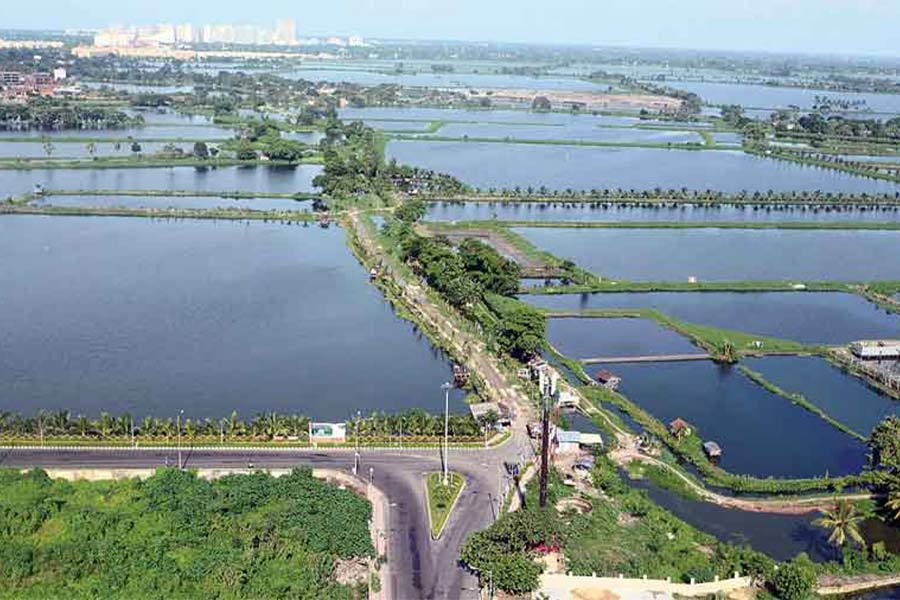
The East Kolkata Wetlands are an example of a circular economy, where waste is a resource rather than a pollutant
Another major feature of this area is its biodiversity. It accommodates a variety of trees, migratory birds, butterflies, moths, snails, snakes and lizards, preserving the ecological balance of the city. They also help in disaster management, much like the Sunderbans but functioning slightly differently. “The wetlands are like sponges that hold a lot of water. They are a buffer zone for disasters like cyclones. If we lose this resource, Kolkata will drown in its own wastewater,” sighs Gupta.
However, attention needs to be paid to the EKW. Dumping of plastic along with solid waste — which is only meant to be dumped in Dhapa — is causing the canals to choke. This has affected the quality of wastewater, impacting the practices of the local community. “The community that treats the waste of the entire city, doesn’t have their waste being collected properly. While they compost their organic waste, what will they do with plastics?” explains Gupta.

The dumping of plastic and solid waste in the canals has led to clogging, severely impacting the ecology of the region Nobina Gupta
Another major threat is encroachment. With the filling up of water bodies and clearing of land to construct buildings and factories, carbon emission is dramatically increasing. Water bodies in EKW play a critical role in regulating the global climate. They absorb carbon from the atmosphere and then store it, acting as a natural carbon sink. Illegal filling of these water bodies hinders further carbon absorption. “If we lose this wetland, we will always have to wear masks,” warns Gupta. It is no surprise that this region is termed as the ‘Lungs of Kolkata.
“The world is fighting for resources, and all the upcoming wars will be for water. In the last two years, the EKW has been facing a water crisis, despite living around water,” rues Gupta. She notes that deeper borewells are being dug to generate income, leading to a significant decrease in groundwater levels and forcing locals to buy water.

The livelihood of the locals around East Kolkata Wetlands depends on nurturing fishes, and polluting the canals can gravely impair this Nobina Gupta
She believes that the way to preserve this wonderful gift is building adequate awareness, strictly abiding to the guidelines laid by Ramsar Convention along with grounded action supporting the local communities. “Seventy per cent of the city doesn’t even know about EKW’s existence and importance. They need to realise that waste water is our lifeline, and be more mindful of the chemical products they use and dispose of in their everyday lives. The authorities must also create restrictions around dumping of solid wastes into the canal and in the wetlands. We cannot afford to wait for catastrophe, must act with a sense of urgency,” Gupta cautions.
Dankuni Wetlands
While EKW has still received some attention in recent times, Kolkata and its surrounding regions have multiple other wetlands that remain unnoticed. Right across the Hooghly are the Dankuni Wetlands, categorised as one of the largest in Bengal.

The Dankuni Wetlands are one of the largest wetlands in Bengal, but still aren’t conserved under the Ramsar list Sandipan Chatterjee
A distinct feature of the Dankuni Wetlands is its biodiversity. “Every winter, almost 200 species of birds migrate here, some even flying 4000 km, just to enjoy the winters here,” says a smiling Sandipan Chatterjee, a PhD researcher specialising in landscape architecture. His research delves into the interaction of colonial infrastructure with landscape. “These are constructed wetlands, which were created as a part of the drainage system by Danish and French settlements in the 1800s,” he explains.
The most unique aspect of this region is that it houses the fishing cat, the state animal of West Bengal. While the animal’s population is dwindling, the Dankuni Wetlands still have a significant number of them, with organisations continuously working for their welfare. “Urbanisation was putting pressure on the region. Due to loss of habitat, the fishing cats were being translocated. When the community found out about this, they actively intervened and stopped it from happening. It was a matter of great pride, since the locals consider it to be a part of their heritage,” he says.
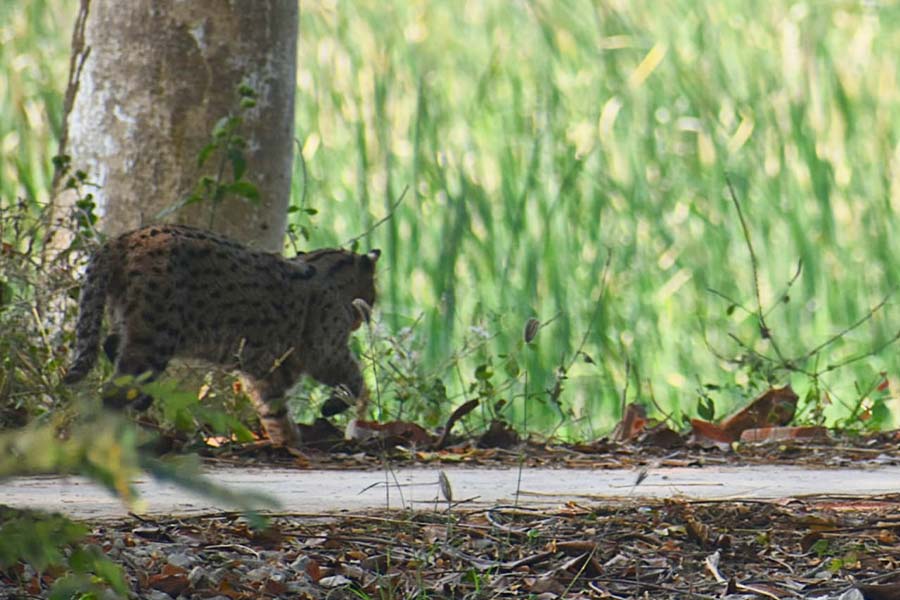
The Dankuni Wetlands are one of the few remaining habitats for West Bengal’s state animal, the fishing cat Siladri Majumder
Much like its twin across the river, the Dankuni Wetlands also face the threat of rapid urbanisation, and have already shrunk significantly. But unlike EKW, they aren’t on the Ramsar List, which would entitle them to conservation under an intergovernmental treaty. “After a 10-year litigation, the National Green Tribunal finally recognised the region as a wetland last year and asked the state government to mark its boundary. However, including it in the Ramsar list will enhance its precautionary measures, bringing in more intense policies and strategies for its conservation,” says Chatterjee.
The advent of factories and warehouses in this region is also leading to a loss of livelihood, since the locals are dependent on practices like fishing for their sustenance. Chatterjee believes that the delineation of wetlands can help mitigate this. He encourages people to amplify this movement, adding that if the borders aren’t demarcated now, there will be constant pressure from builders to encroach. “There are documents around its origin that date back to just 20 years, suggesting that the Dankuni Wetlands occupied almost 1,000 acres of land. We have already lost a significant chunk of it. We can’t lose anymore,” he says.
Forests of north Bengal
As we journey from the plains to the hills of north Bengal, we reach the eastern sub-Himalayan regions — a completely different ecosystem than the rest of Bengal’s green cover and forests.
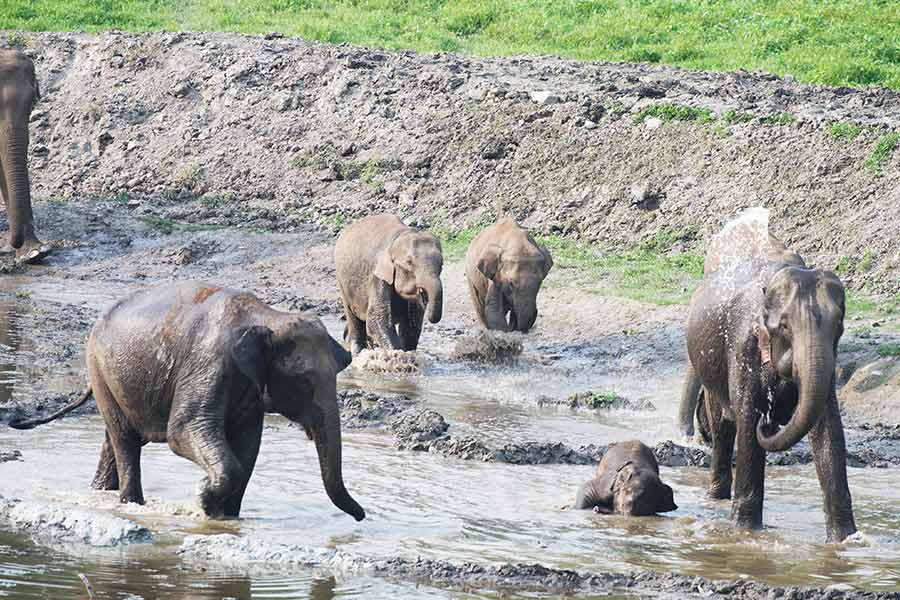
Elephants are one of the primary species that can be found in the forests of North Bengal Pradeep Vyas
Dominated by sal trees, north Bengal’s forests were a continuous untouched stretch before the British arrived and started tea plantations. While tea plantations have never been a threat to the ecosystem of north Bengal, over time, the need for infrastructure development and for protective bases in the region has led to a reducing forest cover. However, a large portion of wild forest still remains — essential for the large animals like elephants and rhinoceros that call the region home to survive and thrive.
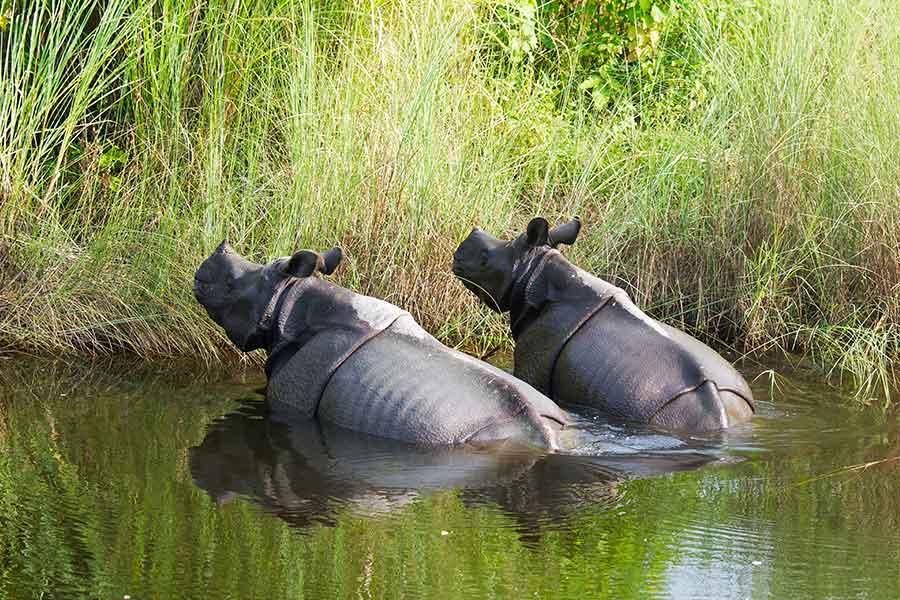
Conservation of Rhinos in Jaldapara has been one of the most difficult yet successful conservation efforts in North Bengal Pradeep Vyas
There was a time when tigers roamed these forests too but their numbers have reduced severely as the green cover began being chopped down. Similar problems were faced with elephants, rhinos and bison, with all three species coming close to the point of extinction. As West Bengal’s former Chief Wildlife Warden, Vyas has seen the conservation efforts. “We took stringent measures to restore the rhino population in the Jaldapara region when there were just 14 left in 1984. Fighting the battle against poachers, we had to take a lot of risks and put tireless efforts to bring back the rhinos to greater strength,” he says. The number of Indian bison or gaur, also a resident of these forests, had reduced to less than 200 but due to the reduction of forest area, but constant efforts have brought that number to near 5000 today.

Bison numbers have improved vastly in north Bengal going from less than 200 to a current count of around 5000 Pradeep Vyas
North Bengal’s forests have an untapped potential, says Pradeep Vyas who feels that “if tigers can be restored in north Bengal, the region can flourish based on tourism. There are already efforts in place and if they continue, north Bengal can become a haven for wildlife enthusiasts who often go towards north and central India to spot tigers.”
Vyas was responsible for a tiger breeding programme in north Bengal to replenish the population of the forests’ lost apex predator. Tigers are the biggest attraction of most wildlife sanctuaries and the forests of north Bengal have massive potential to become a hub for tourism and culture.
Like in the Sunderbans, the local community can be made aware and engaged in tourism to prevent poaching activities. The growth of tourism in the area could lead to a chain of events that would see more work done to replenish the forest that has been broken up several times, while also ensuring a better life for those who call the region home.


